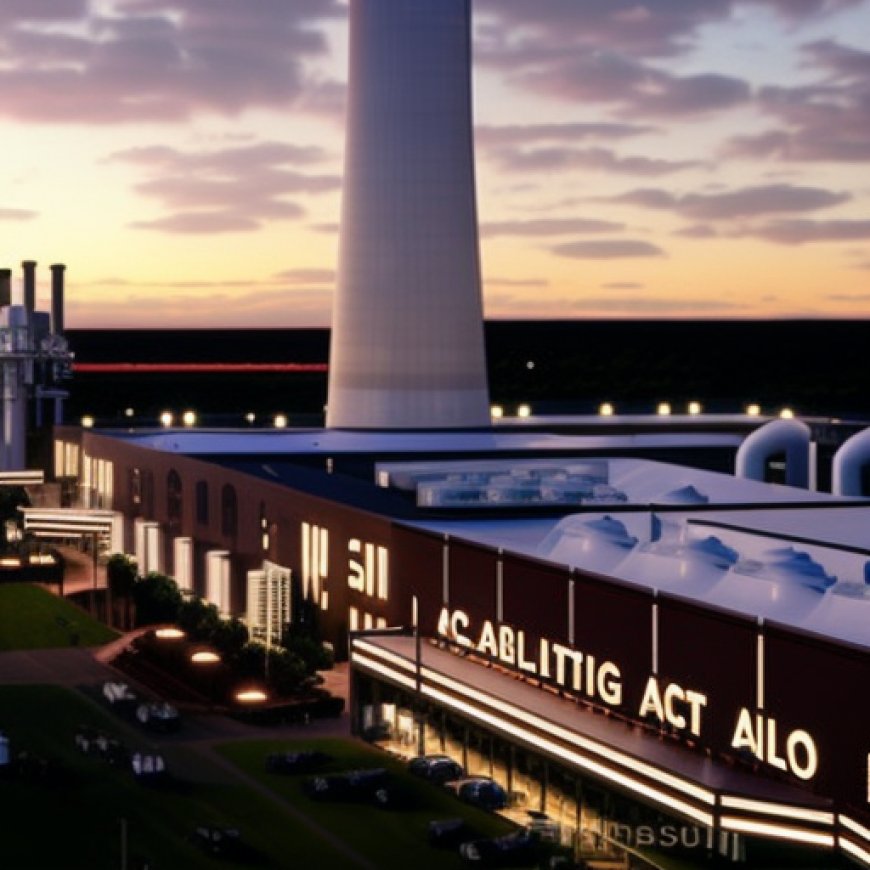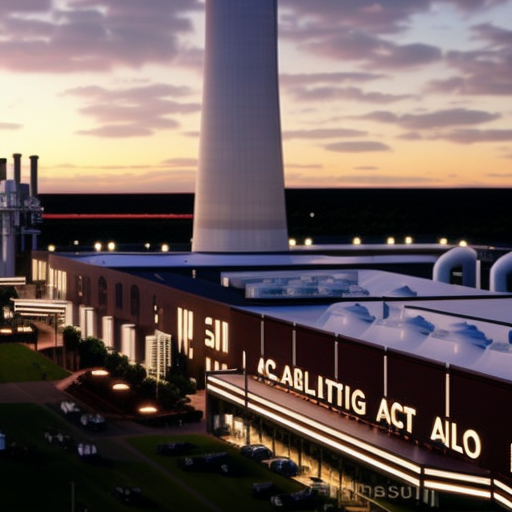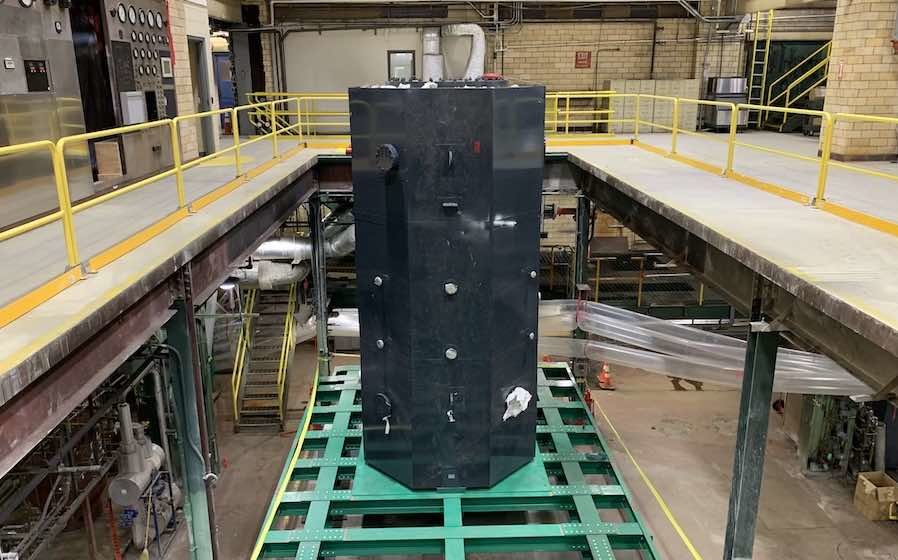Cambridge, Mass., Cogeneration Plant Upgraded With 42-MW Electric Boiler
Cambridge, Mass. Cogeneration Plant Upgraded With 42 MW Electric Boiler Engineering News-Record


Vicinity Energy Installs MW Electric Boiler in Cambridge Plant

Vicinity Energy, an energy solutions company claiming to have the most extensive portfolios of district energy systems in the country, recently took a critical step toward decarbonization by installing a massive MW electric boiler at its cogeneration plant in Cambridge, Mass.
Advancing Decarbonization Efforts
Adding the 42 MW boiler last month to the 250 MW plant—which provides electricity, steam and hot and chilled water to large portions of Boston and Cambridge—puts the company one step closer to electrification. Vicinity will purchase renewable energy certificates to offset the boiler’s electricity consumption, and will be able to produce a carbon-free steam product this summer.
“This 42 MW electric boiler represents a significant leap forward in our decarbonization efforts for Boston, Cambridge and the Commonwealth,” said Bill DiCroce, chief executive officer of Vicinity Energy, in a statement.
Working Towards Net Zero Carbon Emissions
The company produces and distributes steam, hot water and chilled water to more than 230 million sq ft of building space in 12 cities through district energy systems and hopes to achieve net zero carbon emissions for its full portfolio by 2050.
Low-Hanging Fruit: The Electric Boiler
Don Silvia, Northeast senior vice president of operations, is excited about the boiler, which is manufactured by Vapor Power International and weighs 41,000 lb, because it’s a low-hanging fruit toward electrification. “We can get there right away,” he said.
Future Plans for Decarbonization
The second phase of decarbonization will be more involved. Vicinity plans to install a 35 MW industrial-scale heat pump complex that will enter service in 2027, as well as molten salt thermal battery storage, according to a statement.
“The industrial-scale heat pump requires more infrastructure, but will be another major step in getting the plant off of fossil fuels,” he said.
Utilizing the Charles River for Climate Mitigation
The pump will draw 80,000 gallons of water per minute from the Charles River and use its thermal energy to produce steam. The system will be able to return water to the river at a colder temperature, which is a climate mitigation benefit as temperatures rise.
Straightforward Decarbonization Strategies
According to Silvia, these decarbonization strategies are straightforward because of the nature of district energy systems, which involve the production of thermal energy from a central location to be transported through underground pipes.
“[It will] take something like 14 substations to electrify the city [of Boston],” Silvia said. “Each substation takes like 10 years to permit and build and all that, right? We’re doing it our way. All you’re doing is you’re just changing a fuel source at one spot.”
Adapting Infrastructure for the Future
Like many power plants, the Kendall facility has moved through multiple fuel transitions–from coal to oil to its current fuel source, natural gas. The company is taking advantage of its infrastructure and adapting it to the 21st century.
“By leveraging our existing infrastructure and deploying new technologies, we are taking our environmental responsibility to the community from the planning stage to reality,” said Kevin Hagerty, president of Vicinity Energy, in a statement.
The Kendall facility will continue using its combined heat and power system but decrease its reliance on that technology as it approaches full electrification.
SDGs, Targets, and Indicators
-
SDG 7: Affordable and Clean Energy
- Target 7.2: Increase substantially the share of renewable energy in the global energy mix
- Indicator 7.2.1: Renewable energy share in the total final energy consumption
-
SDG 13: Climate Action
- Target 13.2: Integrate climate change measures into national policies, strategies, and planning
- Indicator 13.2.1: Number of countries that have integrated mitigation, adaptation, impact reduction, and early warning into primary, secondary, and tertiary curricula
-
SDG 11: Sustainable Cities and Communities
- Target 11.6: Reduce the adverse per capita environmental impact of cities, including by paying special attention to air quality and municipal and other waste management
- Indicator 11.6.2: Annual mean levels of fine particulate matter (e.g. PM2.5) in cities (population weighted)
Analysis
1. Which SDGs are addressed or connected to the issues highlighted in the article?
The issues highlighted in the article are connected to SDG 7 (Affordable and Clean Energy), SDG 13 (Climate Action), and SDG 11 (Sustainable Cities and Communities).
2. What specific targets under those SDGs can be identified based on the article’s content?
Based on the article’s content, the specific targets that can be identified are:
- Target 7.2: Increase substantially the share of renewable energy in the global energy mix
- Target 13.2: Integrate climate change measures into national policies, strategies, and planning
- Target 11.6: Reduce the adverse per capita environmental impact of cities, including by paying special attention to air quality and municipal and other waste management
3. Are there any indicators mentioned or implied in the article that can be used to measure progress towards the identified targets?
Yes, there are indicators mentioned or implied in the article that can be used to measure progress towards the identified targets:
- Indicator 7.2.1: Renewable energy share in the total final energy consumption
- Indicator 13.2.1: Number of countries that have integrated mitigation, adaptation, impact reduction, and early warning into primary, secondary, and tertiary curricula
- Indicator 11.6.2: Annual mean levels of fine particulate matter (e.g. PM2.5) in cities (population weighted)
Table: SDGs, Targets, and Indicators
| SDGs | Targets | Indicators |
|---|---|---|
| SDG 7: Affordable and Clean Energy | Target 7.2: Increase substantially the share of renewable energy in the global energy mix | Indicator 7.2.1: Renewable energy share in the total final energy consumption |
| SDG 13: Climate Action | Target 13.2: Integrate climate change measures into national policies, strategies, and planning | Indicator 13.2.1: Number of countries that have integrated mitigation, adaptation, impact reduction, and early warning into primary, secondary, and tertiary curricula |
| SDG 11: Sustainable Cities and Communities | Target 11.6: Reduce the adverse per capita environmental impact of cities, including by paying special attention to air quality and municipal and other waste management | Indicator 11.6.2: Annual mean levels of fine particulate matter (e.g. PM2.5) in cities (population weighted) |
Behold! This splendid article springs forth from the wellspring of knowledge, shaped by a wondrous proprietary AI technology that delved into a vast ocean of data, illuminating the path towards the Sustainable Development Goals. Remember that all rights are reserved by SDG Investors LLC, empowering us to champion progress together.
Source: enr.com

Join us, as fellow seekers of change, on a transformative journey at https://sdgtalks.ai/welcome, where you can become a member and actively contribute to shaping a brighter future.







